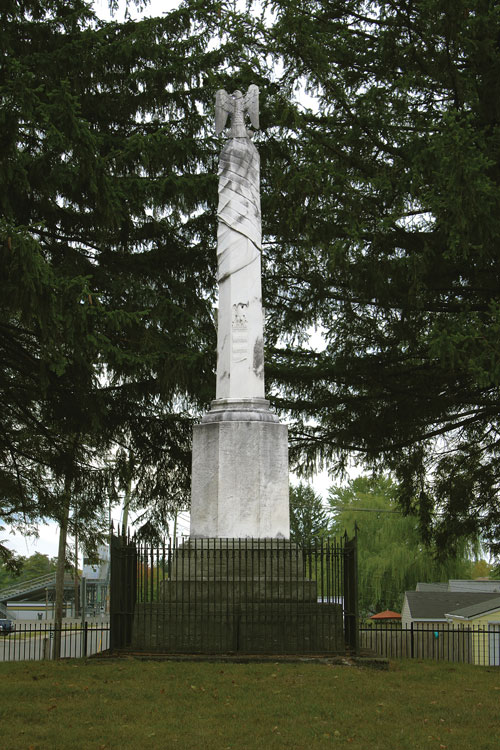By KEVIN YANEY
For The Reporter
Hamilton County has a rich history when it comes to the American Civil War.
If you were to walk through Crownland Cemetery in Noblesville, you would be reminded of what I mean, beginning with the 28.5-foot marble Civil War Monument that sits in the cemetery along Monument Street. If you could make them out, you would find nearly 2,400 names etched into the monument, listing the men from Hamilton County who volunteered to fight to keep our nation from permanently fracturing.
The Civil War lasted for four years: from 1861 to 1865. These four years changed our nation and changed the world. When the war first started, President Lincoln called for a volunteer army of 75,000 be raised to put down the rebellion of the South. Although many states were reluctant to go to war, Hoosier men flocked to Indianapolis to volunteer. Men from Hamilton County were among the first to sign up to join the fight.
Initially, this was thought to be a short-term war. Lincoln asked for a three-month commitment. It did not take long to realize that the Civil War would last much longer and require many more volunteers. By the end of the war, 210,000 Hoosier men had joined the war effort. One out of every 10 men of the 2.1 million soldiers and sailors of the Union forces were from Indiana. Sixty-three percent of men in the state between the ages of 15 and 50 took part in the war.

The Civil War Monument sits inside Crownland Cemetery in Noblesville and contains the names of 2,400 men from Hamilton County who took part in the war. (Photo provided)
In order to sustain the needs of this vast volunteer army, a highly organized military structure was formed. Particularly for the Federal Army, everything that was needed to move, equip, feed, house and support soldiers was packed up and taken in wagon trains. Think of it as a big box store on wheels. Since the war was largely supplied by the states, not the federal government, it became imperative that the men in charge of maintaining all these necessary goods be shrewd businessmen, well connected with merchants back home.
That is where the quartermaster fit into the scheme.
Each regiment was assigned a quartermaster who made sure all the goods were organized, stored, dispersed and accounted for. They were in charge of meeting the needs of 1,000 men. They were responsible for all the livestock and pack animals (there were three million horses and mules used in the war), wagons, food, clothing, tents, weapons and ammunition, medicine, payroll, and burial of the dead. Without them, the North would have never prevailed against the South. This was well known by a former regimental quartermaster, General Ulysses S. Grant, and he used it to defeat the South.
If you wander into Crownland Cemetery and take a look at the Civil War Monument, you will notice that two quartermasters are listed near the top of the “Register of the Heroes of Hamilton County.” Captain William A. Wainwright of the Indiana 75th Volunteer Infantry and Lieutenant William Henry Conner of the Indiana 101st Infantry (the son of William Conner who help found Noblesville) are both listed in the scroll with the regimental officers from the county. Just to the east of the monument, you find the graves of both of these men. If you pass that way, take time to stop at their headstones for a moment. Their work helped win the war.
If you are interested in more information about the men who served in the Civil War from Hamilton County, I am leading a Civil War Veterans Walking Tour at Crownland Cemetery at 11 a.m. Saturday, Nov. 9. The event is free, but you need to register at CivilWarVeteransWalkingTour.com.

